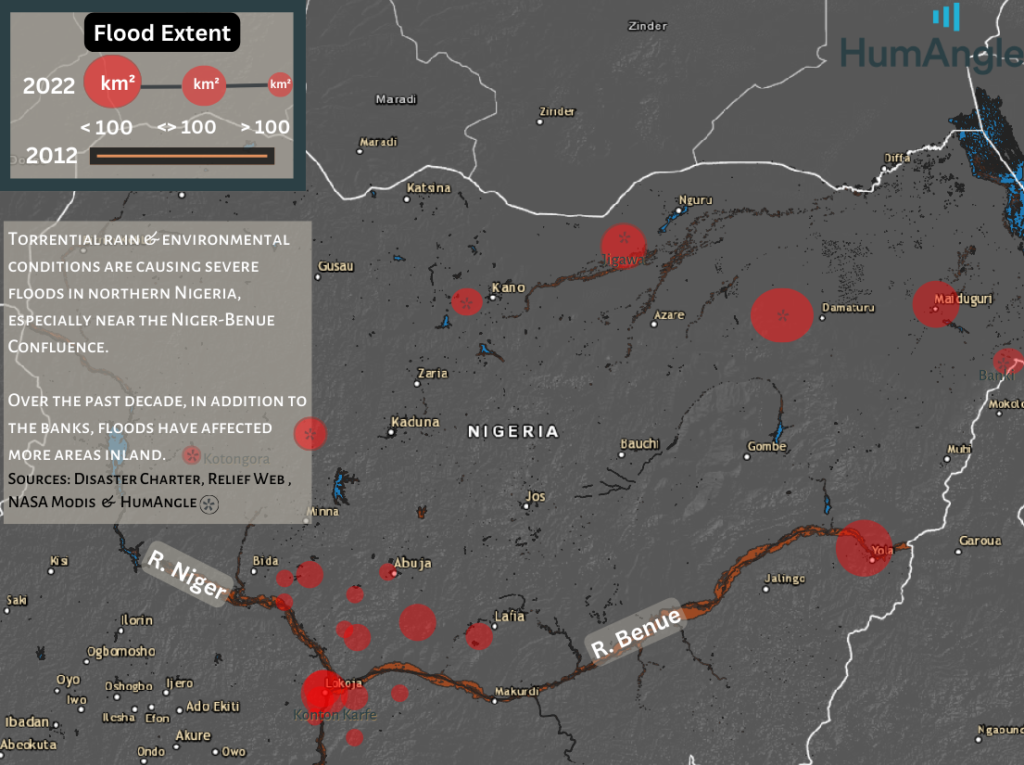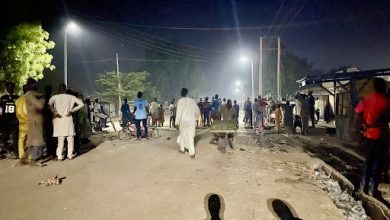Catastrophic Floods Affect Over 1.4 Million People
An official of the ministry of Humanitarian affairs on Tuesday revealed that flooding across the country has caused over 500 deaths and destroyed tens of thousands of homes. And more rain is on the way

The flooding that has resulted from months of heavy rainfall and releases from dam spillovers has affected over 1.4 million people and caused the destruction of about 90,000 homes, according to an official of Nigeria’s Ministry of Humanitarian Affairs.
Over 500 people are reported dead and 1546 people injured, officials said.
More flooding is expected, officials said, as intense rain continues and the water from dam spillages moves downriver.
The ministry gave the figures while announcing the enactment of a plan to respond to the crisis.
Close to 800,000 people have been pushed from their homes, said Nasir Sani-Gwarzo the Permanent Secretary of the ministry which coordinates humanitarian, disaster management and social development in the country.
The government has approved the national emergency flood preparedness and response plans to mitigate and reduce the impact of the flood that has swept through 31 states and the Capital.
The disaster is similar in scale to the flooding in 2012, when over 300 people were killed, Sani-Gwarzo said.
This year floods have completely destroyed 45,249 homes and about the same number were damaged.
Over 70,500 hectares of land have been completely destroyed.

The flood could cause further damage as it moves downstream.
“There was still a prediction that many more communities might be affected, especially along the line of the River Benue, River Niger and down to the ocean”, Sani-Gwarzo said.
The country’s Meteorological Agency (NiMet) and the Nigeria Hydrological Services Agency (NIHSA) have also warned more states face risks of flooding especially in the North Central, South East and Southwestern regions.
The Director-General of Meteorological Agency, Mansur Bako Matazu, was quoted to have recently said that in the coming days, there would be more high intensity rains and coupled with the dams being let open, there will be more floods.
“So in terms of the rainfall induced floods, we’ve seen the peak, but remember we told you that this rainwater gets collected into the reservoirs and dams, and whenever they are filled, it gets spilled. So, on the 13th of September, the Lagbo Dam was released. And also Kainji and Shiroro dams were also released. So what we’re witnessing now is riverine flooding” he stated.
Support Our Journalism
There are millions of ordinary people affected by conflict in Africa whose stories are missing in the mainstream media. HumAngle is determined to tell those challenging and under-reported stories, hoping that the people impacted by these conflicts will find the safety and security they deserve.
To ensure that we continue to provide public service coverage, we have a small favour to ask you. We want you to be part of our journalistic endeavour by contributing a token to us.
Your donation will further promote a robust, free, and independent media.
Donate HereStay Closer To The Stories That Matter




